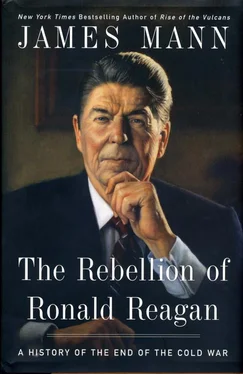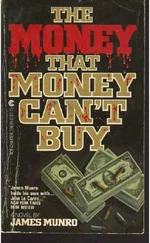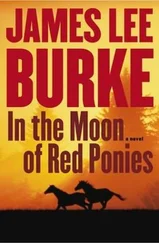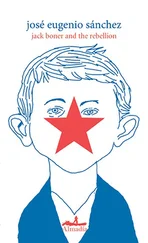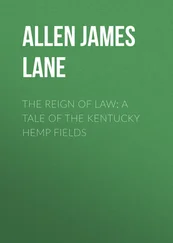On June 4, Poland’s government held open parliamentary elections, the first of their kind in more than four decades. The goal was to win public support for a program of economic reforms that might be supported not just by Wojciech Jaruzelski’s Communist Party but by Lech Walesa’s opposition Solidarity movement, which, it was thought, might gain a minority of seats in the legislature. Instead, surpassing all predictions, the Solidarity candidates won virtually everything, including ninety-nine out of one hundred seats in the Senate.
Ronald Reagan, in the unaccustomed role of ex-president, quickly seized upon these changes in Hungary and Poland, urging the new Bush administration to stop being so aloof toward Mikhail Gorbachev. “Amazing things are afoot in the world this spring,” said Reagan, speaking in London nine days after the vote in Poland. “It is true that the West could stand pat while this is happening…. But it is exactly when you are strong and comfortable that you should take risks.” In particular, said Reagan, the United States and its allies should “take the risk that the Soviets are serious in their efforts to reach genuine arms reductions with the West.”
As he had in the White House, Reagan emphasized the significance of Gorbachev’s personal role as Soviet leader, repeating the arguments he had made while in the White House. Senior officials of the new George H. W. Bush administration, such as Defense Secretary Dick Cheney and Deputy National Security Adviser Robert Gates, had been arguing that American policy should not be centered on Gorbachev. Reagan argued precisely to the contrary. “I believe Mikhail Gorbachev is the Soviets’ best and probably only hope to turn things around,” Reagan said. 2
Gorbachev and Eastern European leaders gathered for a summit meeting of the Warsaw Pact in early July. The Soviet leader made it clear he would do nothing to reverse the political changes in Hungary and Poland, and that other Communist leaders could not rely on the Soviet Union to send in troops. Gorbachev’s rhetoric was lofty. “We are talking about the end of a period that has lasted over forty years, about the beginning of a transition to a new international order,” Gorbachev said. In a response, Honecker was less sanguine. “Looking at the state of international affairs, we cannot say that there has been a fundamental change for the better,” he told Gorbachev and the assembled Communist Party leaders. (A few weeks earlier, Honecker’s wife, Margot, had been overheard wondering aloud: “Who would ever have dreamed that the counterrevolution would come at us from the Soviet Union?”) 3
In late August, Poland formed a new coalition government led by Solidarity. Throughout the summer, Poland’s Communist Party leaders had resisted, but Gorbachev had finally helped persuade them to give way for the first non-Communist government in the Warsaw Pact. Within days, Hungary dropped the next shoe: its government announced that starting on September 11, it would lift restrictions on travel by East Germans to Austria. As a result, the exodus of East Germans became larger and more frenetic. In Czechoslovakia the crowds of East Germans at the West German embassy in Prague were swelling out of control. Each day, new entrants climbed the walls into the building and squatted inside, begging for beds, water, and bathrooms.
By September 1989, the sense of change was exhilarating. “The Poles toppled their Communist government. And in Hungary, you could just feel it, that the Communists were changing in the leadership,” recalled Helmut Kohl, then West Germany’s chancellor, in an interview many years later. West Germany was quietly granting credits and other financial benefits to encourage the reforms. “We had a simple strategy, that we have to support the Poles, we have to support the Hungarians, that means economic support, political support, whatever they want,” said Kohl’s principal foreign-policy adviser, Horst Teltschik. Born in the Sudetenland, the western part of Czechoslovakia, Teltschik played the leading role in West Germany’s relations with Eastern Europe. In August, Teltschik arranged for Hungary’s President Miklos Nemeth to meet secretly in West Germany with Kohl. At the end of September, shortly after dropping its travel restrictions, Hungary obtained loan credits of 500 million marks (about $250 million) from the West German government. 4
East Germany was a more complicated problem. Kohl’s government was cautious: eager to use its financial leverage, but reluctant to do anything that would create turmoil or a counterreaction. In late September, West German Foreign Minister Hans-Dietrich Genscher negotiated a delicate agreement with Honecker’s government: several thousand East Germans camped out in Prague would be permitted to leave for West Germany, but only in special locked trains that would pass through East German territory. That arrangement allowed Honecker to save some face by claiming that those who were leaving his country had been expelled.
The refugees in Prague had been reluctant to get on the trains, afraid that they were being deceived and would be detained during the crossing through East Germany. As a result, West Germany agreed to place its own officials on the trains as guarantors of the agreement and the refugees’ safety. Walter Ischinger, then a young official of the German Foreign Ministry, was sent to Prague to ride one of the trains. It was unheated and damp, with no food. When the train passed through East Germany, other East Germans had to be blocked from trying to jump on. In the predawn hours, the train finally crossed into the West German town of Hof in Bavaria. The East German passengers, starving and cold, began to shout, “ Freiheit, freiheit (‘Freedom, freedom’).” 5
Their success prompted other East Germans to leave or at least think about leaving. Freedom to travel had been the single preoccupying political issue in East Germany. Restricting emigration lay at the core of Honecker’s repressive apparatus; it was, after all, the reason for the Berlin Wall. “If there was one mass grievance [among East Germans], it was the inability to go abroad,” wrote the historian Charles S. Maier. Now, thanks to East Germany’s neighbors, the system of controls on travel was unraveling.
No dissident leader had emerged in East Germany of a stature comparable to Walesa in Poland or to Vaclav Havel in Czechoslovakia. In the spring of 1989, the early stirrings of a movement could be detected in Leipzig, where a series of Monday-night prayer meetings began to attract hundreds of protesters. In late September, amid the crisis over the East German refugees, these previously modest Leipzig demonstrations attracted five thousand people. The next Monday night the numbers grew to twenty thousand and on October 9, more than seventy thousand. By then, the protests were spreading to East Berlin and throughout East Germany.
Honecker was losing control not only over the country but the Communist Party leadership. For months, he had been planning a gala celebration on October 7, the fortieth anniversary of the creation of the East German state, with a huge parade and a reviewing stand of visiting Communist Party leaders. Indeed, one reason for Honecker’s decision to allow the East German refugees to leave Prague had been the desire to avoid embarrassment on the eve of October 7.
Instead, the anniversary gala accelerated Honecker’s downfall. It was accompanied by protest demonstrations that day, both in East Berlin and elsewhere. Gorbachev flew in for the ceremonies, but his presence served only to underline the unpopularity of Honecker’s regime. On the streets, ordinary people, ignoring their own leader, shouted “Gorbachev! Gorbachev!” Even an officially organized torchlight procession of young East Germans, composed mostly of Communist Party members and their families, produced chants of “Gorbachev! Perestroika! Help us!” 6
Читать дальше
